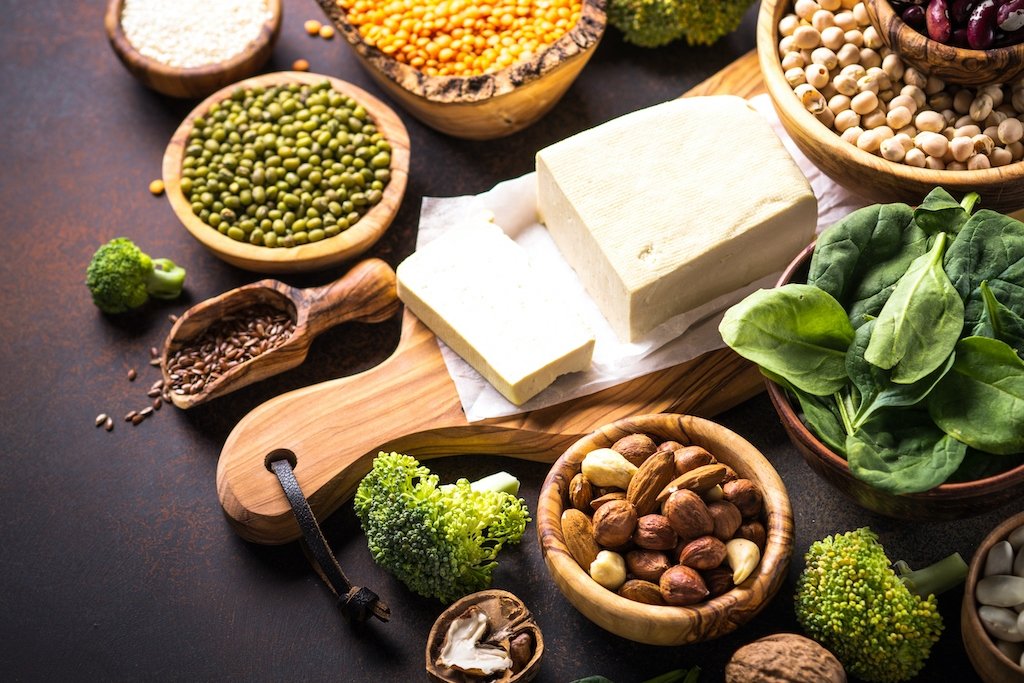Market Overview
By 2028, the market for plant-based proteins is anticipated to reach $23.4 billion, growing at a CAGR of 9.7% from 2021 to 2028. Growing consumer interest in meat alternatives, expanding health and wellness trends, rising demand from the food and beverage sector, and advancements in ingredient technology, such as microencapsulation, are some of the key drivers propelling the expansion of this market.
In addition, rising interest in veganism, developing economies in Southeast Asia, Latin America, the Middle East, and Africa, as well as growing intolerance for animal proteins, offer considerable potential prospects for producers of plant-based proteins. The market’s expansion is hampered by a considerable preference for animal-based proteins and shifting raw material prices. On the other hand, growing soy-free and gluten-free trends present a significant challenge to the world’s manufacturers of plant-based proteins.
Plant-based Proteins Industry Predictions in Light of COVID-19
The plant protein sector has done a remarkable job of adapting to the situation. The scarcity of traditional meat substitutes on grocery shelves presents a once-in-a-lifetime opportunity to accelerate consumer demand for products based on plant proteins. Tyson and Smithfield halting their facilities due to COVID-19 outbreaks will undoubtedly cause a slump in the meat processing industry over the next few of years. A potential meat shortage is coming. Customers are switching to plant-based diets as a result of the difficulties facing the major meat producers.
The traditional protein supply chain’s disruption is primarily to blame for the rise in demand for plant proteins, which won’t considerably lower demand for animal-based protein. Out-of-home usage will increase once things return to normal. Additionally, the meat processing sector will carry on as usual. The unexpected boost in sales will once more be somewhat tempered by these factors. In such a circumstance, producers of plant proteins must re-enter their sourcing strategies, defend their product lines, and use the adaptability and speed of their supply chains in addition to their channels for route-to-market. Networks for e-commerce and distribution need to be streamlined and optimised. Also, businesses will need to reevaluate their pricing and promotion plans in light of the impact of fluctuating commodity prices and other costs-to-serve and accelerating demands.
Drivers: Innovation & developments related to plant-based protein to augment vegan trend
The vegan population in Europe makes up more than 6% of the continent’s population, according to a 2019 survey issued by the European Vegetarian Union. In addition, The Vegan Society reports that more over 600,000 people in the UK identified as vegans in 2019, a 300% rise from 2014. This served as one of the main impetuses for food and beverage producers to innovate and develop meat, dairy, and protein-rich beverages, as well as provide plant-based foods and beverages a boost. The creation of foods and drinks with plant-based proteins has been a focus for producers including Archer Daniels Midland Company (US), DuPont (US), Roquette Frères (France), Kerry Group (Ireland), Ingredion (US), Beyond Meat (US), and Tyson Foods (US).
Restraints: Allergies associated with plant-based protein sources, such as soy & wheat
Despite the fact that plant-based foods and beverages are functionally healthy and contain important minerals, humans have occasionally developed allergies to them, which has limited the market’s expansion. For instance, soybeans are high in nutrients like vitamins, minerals, and proteins, but soy also contains anti-nutritional elements that may result in allergies. Soy is one of the “Big Eight” allergens, along with cow’s milk, eggs, peanuts, tree nuts, wheat, fish, and shellfish, that account for 90% of all food allergies, according to the Cleveland Clinic. When the body’s immune system misinterprets the benign proteins contained in soy as harmful and makes antibodies to fight them, the result is a soy allergy. Furthermore, soy protein contains a lot of phytic acid, which may prevent several critical minerals including calcium, magnesium, copper, iron, and zinc from being absorbed. Humans who are allergic to soy may also experience hives and itching. Bloating, diarrhoea, nausea, and stomach pain are other signs.
Opportunities: Focus on aquatic plants as new & emerging sources of protein
Consumer health awareness has increased, and there has been a significant trend towards individualised nutrition. Consumers today are more aware and particular about the food they eat and how it affects their bodies. Aquatic plants offer a huge possibility to collect proteins and components that match the distinct physiological and metabolic needs of the consumer, in addition to soy, wheat, and pea as the main sources of plant-based protein.
Plant-based proteins are created naturally through a series of transformations in which different chemical elements come together to form a particular structure. The energy required for the process is provided by sunlight. The chlorophyll found in plants is a key component in this unusual process. Oceans and freshwater bodies including lakes, rivers, and marshes receive more than 70% of the sun energy. The world’s water bodies contain a significant untapped supply of aquatic proteins that are safe for human consumption and can be enhanced through modern aquaculture techniques.
Challenges: Concerns over quality of food & beverages due to adulteration of GM ingredients
One of the most common sources of plant-based proteins is soy, which is also widely grown in Brazil, the US, Argentina, China, and India. The demand for soy, wheat, and pea has increased along with the rise in consumer demand for plant-based food and beverages. Yet, adulteration with Genetically Modified (GM) substances constitutes an expanding hazard in order to meet the rising demand for various plant-based protein sources. For instance, GM soybeans are generally used in animal feed, whereas non-GMO soybeans are mostly used for human consumption. However, the manufacturing of non-GMO soybeans requires additional care and effort, which leads to higher cost consumption involved in earnings and lower profits.
The majority of GM soy is produced industrially using hexane, which is harmful to human health if taken in larger amounts. Consequently, the use of plant-based food products made from GM soybeans has caused worry among consumers all over the world.
Key Players
The research provides a competitive landscape that is based on a thorough analysis of the major strategic decisions made by the top industry players in the plant-based protein market over the past few years. The leading companies profiled in the global plant-based proteins market are Archer Daniels Midland Company (U.S.), Cargill, Incorporated (U.S.), Roquette Frères Le Romain (France), Ingredion (U.S.), Kerry Group (Ireland), DuPont de Nemours, Inc. (U.S.), Now Foods (U.S.), Tate & Lyle PCL (U.K.), Axio (U.S.).
Scope of the report
Plant-based Protein Market, by Type
- Soy Protein
- Soy Protein Concentrates
- Soy Protein Isolates
- Textured Soy Protein
- Soy Flour, Grits, & Chunks
- Wheat Protein
- Vital Wheat Gluten
- Wheat Protein Isolates
- Hydrolysed Wheat Protein
- Textured Wheat Protein
- Pea Protein
- Pea Protein Isolate
- Pea Protein Concentrate
- Others
- Canola Protein
- Potato Protein
- Rice Protein
- Corn Protein
- Others
Plant-based Protein Market, by Crop Type
- Genetically Modified Organism Crops
- Non- genetically Modified Organism Crops
Plant-based Protein Market, by Source Process
- Conventional Plant-Based Protein Ingredients
- Organic Plant-Based Protein Ingredients
Plant-based Protein Market, by Form
- Solid (Dry)
- Liquid
Plant-based Protein Market, by Application
- Food and Beverages
- Meat, Poultry, & Seafood
- Bakery
- Meat Analogue
- Dairy & Dairy Alternatives
- Cereals & Snacks
- Beverages
- Others
- Animal Feed
- Nutrition & Health Supplements
- Pharmaceuticals
- Others
Plant-based Protein Market, by Geography
- North America
- U.S.
- Canada
- Europe
- Germany
- France
- U.K.
- Italy
- Spain
- Rest of Europe (RoE)
- Asia-Pacific (APAC)
- China
- Japan
- India
- Australia
- Rest of Asia-Pacific (RoAPAC)
- Rest of the World
- Latin America
- Middle East & Africa



